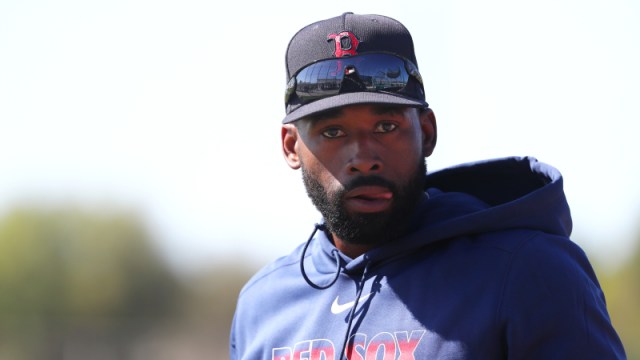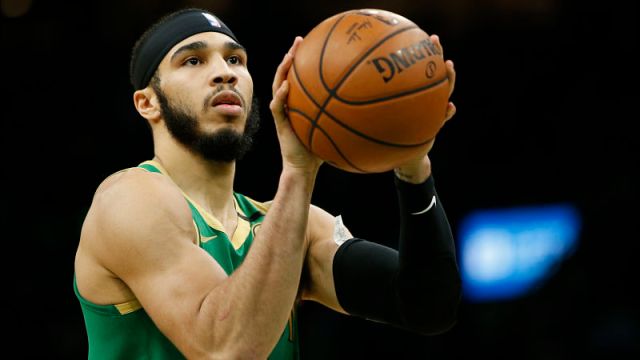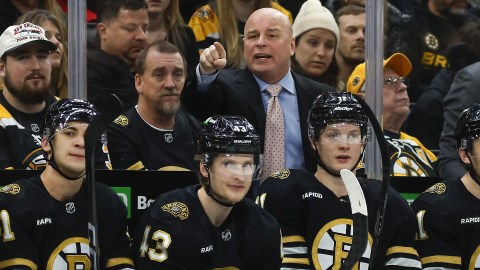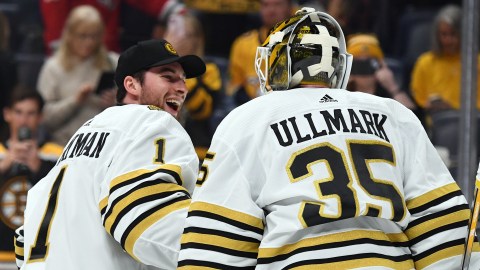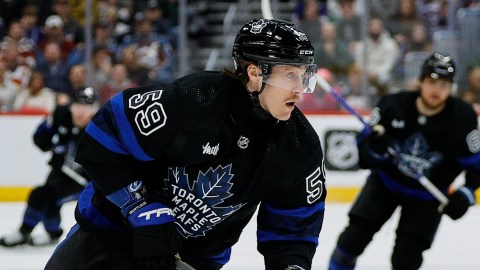You could argue that part of the reason the Boston Bruins fell to the St. Louis Blues in the 2019 Stanley Cup Final was due to their perceived lack of toughness.
That void has become overstated, but there is some truth in it.
By acquiring Nick Ritchie on Monday ahead of the NHL trade deadline, the Bruins certainly added a little bit of grit to their lineup — but it did come at a hefty expense.
Danton Heinen is going to the Anaheim Ducks in a one-for-one deal. For as much as Heinen became increasingly (and needlessly) maligned by the fanbase, the Bruins are losing an important asset both on the ice and as a trade piece.
Sure, Heinen’s unwillingness to shoot the puck sometimes was as infuriating as it was perplexing. But he is a 200-foot player who can be used on both special teams units, and can plug in and play on any of the top three lines. In terms of defensive ability, he was up there with Patrice Bergeron and Joakim Nordstrom as Boston’s most gifted defensive forwards, especially on the forecheck.
The Bruins’ third line of Charlie Coyle, Marcus Johansson and Heinen arguably was their best trio in the Stanley Cup Final. Plus, Heinen could’ve been packaged into a bigger trade if one came along. Some big deals often require an NHL-ready player to go as part of the package, and a guy like Heinen would be ideal in such a situation.
As for Ritchie himself, he’s a heavy player (you’ll remember him railroading David Backes) who averages around 30 points a season. Barring another move by the Bruins, it seems like he’ll join Anders Bjork and Coyle on the third line, assuming Ondrej Kase firmly grabs the second line right wing role. Maybe Ritchie sees some run on the fourth line as well, but either way, it seems his home will be on the bottom six. The 24-year-old did receive a fair amount of ice time on the Ducks’ power play, so there might be a fit for him on the second unit for Boston.
A possible issue, though, is which side he’ll play on. Assuming he’s on the third line, both he and Bjork are left shots. Part of what limited Bjork from really getting going in the NHL in previous years was that he was playing on his off side, and he’s thrived much more this campaign while more often playing on the natural left. Someone is going to have to move to the right side, which could present a hurdle to overcome. It’s worth noting Heinen was fairly comfortable playing on both sides, and while that’s not to say Ritchie or Bjork isn’t, but it’s something that might take a little figuring out.
That said, the third line certainly could benefit from Ritchie and his willingness to get to the net might allow some more freedom to Coyle and Bjork, something Heinen could not often provide as time went on. His penchant for landing penalties ultimately could become problematic, but time will tell if his willingness to throw his weight and ability to put up some points will outweigh that.
Look, it’s understandable why the Bruins did this deal. They are saving money this season and next by swapping Heinen for Ritchie, and Ritchie’s going to bring a tougher brand of hockey to the Bostons lineup. But Heinen wore many hats for the Bruins, and losing him isn’t insignificant.

